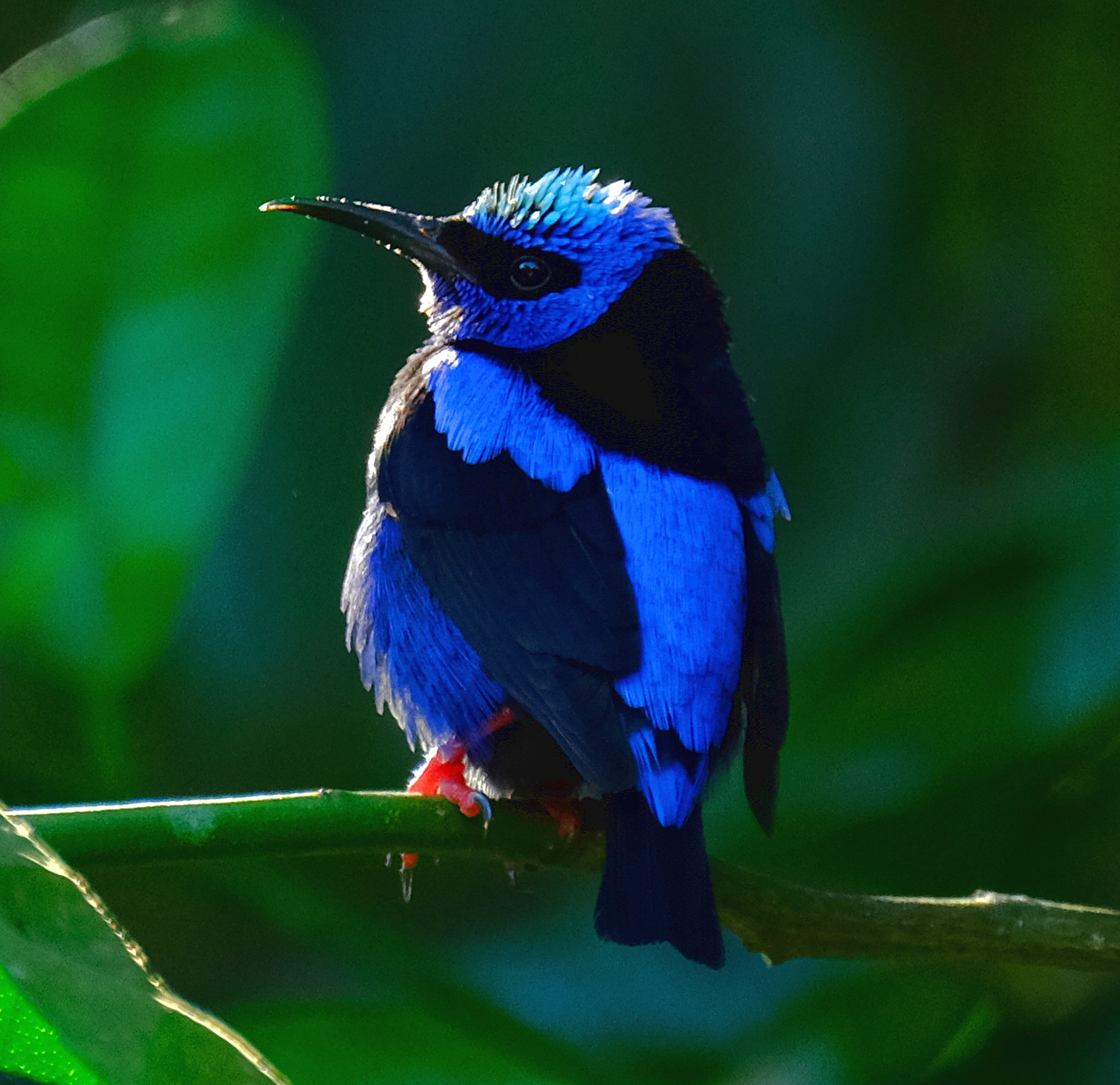The Mountain Bluebird is one of my favorites. Where we normally see them, their surroundings are drab. So seeing one of these pastel-blue birds is a real eye opener. They are usually out in the open, but they are shy and do not let me approach for a close photo. This one was taken with a 400 mm telephoto lens on an overcast day.
Blue-gray Gnatcatcher - A subtle beauty
Blue-gray Gnatchater
The Blue-gray Gnatcher is a common bird in Central-Coastal California in the summer. It flits around in the brush wagging and lifting its tail which startles insects causing them to fly to become a tasty morsel for this bird. This photo is of a male because of the blue “V” on its forehead.
If lucky, you will encounter these birds nest building. They gather caterpillar and spider silk and use it to fasten fragments of lichens into a small thimble which becomes the nest. The nest looks like a bump on a tree’s branch and it’s impossible to know if it’s a nest unless you see an adult fly onto it.
Orange-breasted Bunting
There is nothing like coming up on this little bird. We were walking down a road with dry grass and barbed wire fence. Out of nowhere, a blue gem catches the eye - even with its flashy colors, it just barely catches the eye.
Yellow-billed Magpie
Yellow-bill Magpie (David Zittin, Santa Clara County 2019)
You don’t think much about the birds occurring where you live. This species only occurs in a small area of California. Whenever I run into someone who has come a long distance and is excited about seeing the Yellow-billed Magpie, it amazes me because they are just another local bird for me. The same occurs when I go bananas over encountering a Dickcissel in Texas or a Fish Crow in Florida. One man’s rarity is another’s common bird.
Its cousin, the Black-billed Magpie has a much wider distribution over several lower states in the west, Canada, and up into Alaska.
Speckled Tanager: Eye Candy
It’s hard to describe the feeling that a birder has seeing one of these for the first time. They are strikingly beautiful with a color combination that takes the breath away from the viewer.
Speckled Tanager (David Zittin, Costa Rica 2018)
Speckled Tanager (David Zittin, Costa Rica 2018)
More blue: Honey Creepers
Honeycreepers are common in Costa Rica. They are often seen at places where fruit is put out to attract birds.
The Green Honeycreeper male is blue, but the female is green.
The female Green Honeycreeper, unlike the male, is green.
The Blue Dacnis
Blue Dacnis (David Zittin, La Selva Research Station, Costa Rica, 2018)
This beautiful blue neotropical bird is found from Nicaragua south to the northern half of South America. Like many birds, it is an opportunistic feeder eating insects, seeds and fruit.
The electric blue color of the male is eye catching. This one is probably a young male because it still has some green color on its wings. The female is an intense green with a blue head.

